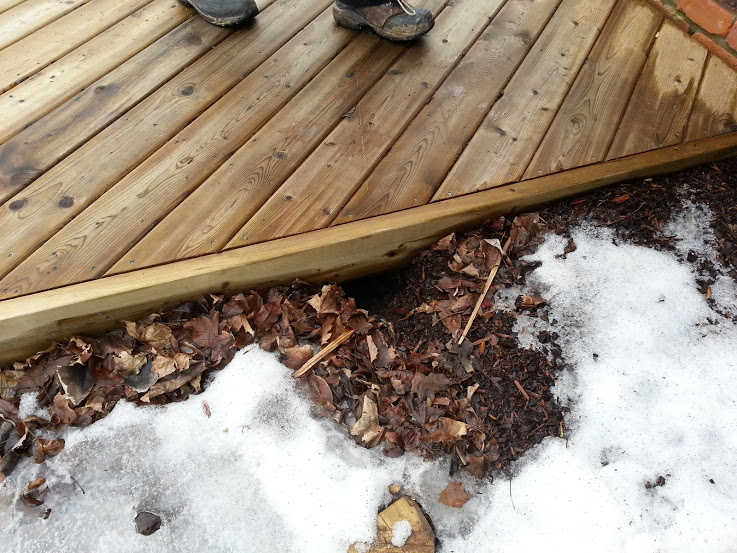The word “skunk” has grown to have a negative connotation in the human world, predominantly because of the fact that the tell-tale sign of the species is their pungent smell that is notoriously difficult to remove from clothes and pets. Skunk removal is a common problem for many throughout Canada and North America in general, as the critters often seek refuge in crawl spaces, under porches and decks of homes.

Evidence of skunk entry to below a deck
The thing about these pesky critters is, despite their bad name, they’re actually quite docile creatures that never seek out trouble or clash with humans or other species intentionally. That said, it only takes a single spray below your deck or porch for the smell to make its way into your home. Skunks are very active during summer and early fall and can be seen outside their dens quite frequently. Once the weather cools down in winter skunks tend to hunker down inside winter dens and will spend less and less time in the open.

Digging around out the area next to the deck and burying heavy gauge screen to prevent skunks from gaining access
Skunks spend the fall eating as much as possible so they can bulk up and stay warm during the mid-winter dormancy, unlike birds and rodents that actually hoard food for the winter. The binge eating generates layers of thick fat under the skin, which the skunk then metabolizes during its dormant rests. The animal typically uses different dens at different periods of the year; while they are capable of digging their own winter burrows, they prefer to use spaces and crevices that belong to others, mostly human structures in cities, which creates skunk removal emergencies.
So, what kind of skunk removal methods are there? Contrary to popular belief, not all methods are effective in the long term. Trapping and relocating skunks doesn’t do anything to address the root of the problem. Even if you are able to trap a skunk that’s living under your deck or shed there’s no guarantee that other skunks in the neighbourhood won’t find that area attractive in the future and you’ll soon find another skunk has taken up residence on your property. During spring and summer trapping can cause orphans if you relocate a mother skunk only to discover later there’s a litter of babies tucked away under the porch. The only humane way to remove babies from below a structure is by hand. This is why calling a professional is recommended.
Once the babies and adult skunks have been removed from below your deck or shed the next step is denying them access again. That involves digging around the perimeter of the structure and burying heavy gauge screening in the ground. This will protect you against any future infestations. Digging through frozen ground can be next to impossible so it’s best to remove skunks during fall so that you’re not stuck with them until spring.
Prevention is always better than damage control. That means you should make sure to secure all pet food on the property, as well as any garbage bins. Remove all easily accessible water sources and check your property frequently if you have bushes or trees that harvest nuts, berries or fruit. Blocking their access to the areas underneath your home is the safest method there is.
If these DIY measures aren’t effective contact Skedaddle Humane Wildlife Control for help. Skedaddle has highly trained technicians that will identify any skunk entry points and with their specialized hands-on removal techniques they will safely remove these creatures from the home and do the hard work of making sure they can’t get back in. Our wildlife technicians will make sure your home is protected from any future skunk visits and ensure that your family and pets are safe.


